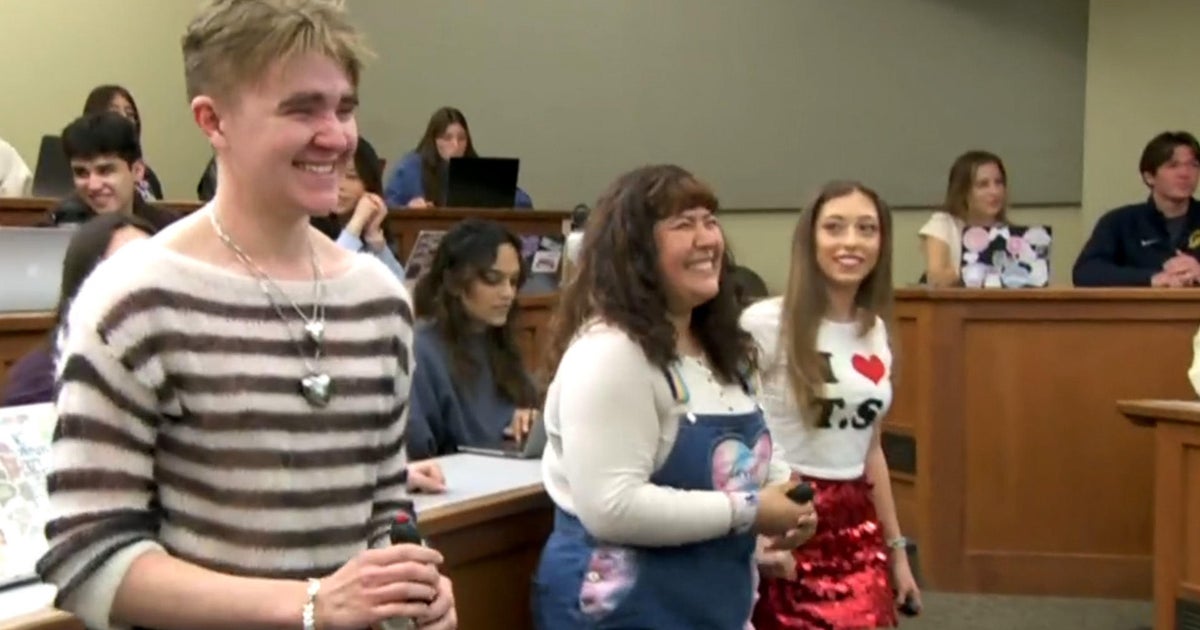Architects create new model designed to better serve communities
Michael Murphy and Alan Ricks were still students at Harvard's Graduate School of Design when they were asked to help design a hospital in a remote, rural district of Rwanda for the nonprofit organization Partners In Health. The pair says lessons learned on that project inspired them to develop a new model of architecture, one focused on serving the needs of the community and providing beautiful design to groups and communities typically unable to afford great architecture. Their non-profit firm, Model of Architecture Serving Society, or MASS, has projects in Rwanda, many other African nations, and now, here in the U.S. Lesley Stahl reports from Rwanda, where the idea for MASS began, on the next edition of 60 Minutes, Sunday, October 31, at 7 p.m. ET/PT on CBS.
MASS today has a large presence in Rwanda, with a staff of more than 200 in its capital city, Kigali, and several large construction projects around the country. Though started by Americans and headquartered in Boston, more than half the firm's staff are Rwandan and its Kigali office is headed by Rwandan architect Christian Benimana, who was impressed by MASS' emphasis on employing local labor and materials to make the building process as helpful to the community as the finished product.
"It is critical for us to have prospect[s] for a better future," Benimana tells Stahl.
The firm's ethos grew out of mandates given by Partners In Health founder Dr. Paul Farmer when the young architects were designing that first hospital: it had to be beautiful; had to employ as many local citizens as possible; and it had to have natural airflow to prevent the spread of airborne diseases like tuberculosis. Natural ventilation to allow buildings to breathe became a central theme of MASS' work going forward.
Says Murphy, "This entire hospital is designed around that simple idea that air flow, air movement, are the basic premise that we should design our buildings around, and in particular our hospitals, so that patients don't transmit airborne diseases to each other." It's a concern that has become particularly critical in this time of COVID-19.
That hospital project spurred the local economy in Butaro, located in a district of 350,000 people that previously didn't have a doctor. Heavy machinery was expensive and difficult to get to the site, so the project hired local workers to dig the foundation by hand. It cost less money, took less time, and gave many people needed work. Materials, too, were difficult to get to the location. But noticing the generous amount of volcanic stone in the area – a nuisance to farmers – they decided to fabricate the hospital's façade with it. The idea spawned a masonry industry in the region. Murphy tells Stahl that more than 4,000 people worked on the project.
Word soon spread in architectural and non-profit circles, and Murphy, Ricks, and a few colleagues launched MASS as a non-profit architecture firm to continue their new model of building design.
"Very quickly we had a lot of work, because there weren't many other people doing this," says Ricks.
Murphy grew up in Poughkeepsie, New York. He took 60 Minutes back there to see what MASS is doing for the old Hudson River town whose industries dried up years ago.
Murphy says, "We had just been in one of the most rural places in the world, and we had seen a hospital change the economy. I said, 'Why can't we do that same thing here in Poughkeepsie?'"
MASS opened a small office in the town and got to work. Murphy showed Stahl some of the results: an old trolley barn converted into an art space, housing, a food hall, and a headquarters for the environmental group, "Scenic Hudson," being converted from an abandoned factory.
MASS is also working in other U.S. cities, including Cleveland, Santa Fe and Birmingham. Murphy says MASS and its new model are making a difference.
"There's some clear simplicity to it," Murphy says. "There's things we have to build. There's people we have to hire. There's materials we have to use. And if you think about the whole thing as a design project, you can have a lot more impact."



